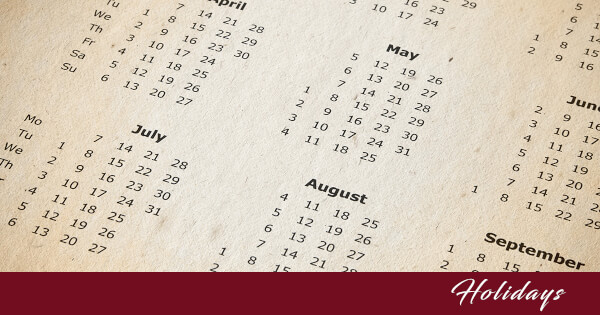Easter is when Christians celebrate Christ’s resurrection. It happened after the Jewish Passover, but the exact date is unknown. The Jewish holiday calendar is based on solar and lunar cycles and their holiday calendar’s feast days move each year. This presented a problem for the early church, trying to create consistency. Add to that the split between the Western Church (Protestant and Roman Catholic) and the Eastern Church (Greek and Russian Orthodox), and the confusion about when to celebrate Easter grew.
The Solution . . . Sort Of
In 325 A.D., the Roman Emperor Constantine, a Christian, decided a definite date for Easter was needed. He called together the Council of Nicaea—a group of bishops speaking on behalf of all Christian churches—and instructed them to pick a date. Their decision: Easter would be celebrated the Sunday following the first full moon (also known as the Paschal Full Moon) after the vernal equinox.
Both the Eastern and Western churches agreed to this. Problem solved, right? Wrong. The Alexandrians, experts in Astronomical calculations, set March 21 as the “perfect” date for the equinox. However, the Western Church used the ecclesiastical calculations to determine the full moon while the Eastern Church used astronomical calculations.
If that wasn’t enough, the calendar changed again.
Did you know the word Paschal comes from Pascha, a transliteration of the Aramic word meaning Passover?
The Calendar
At the advice of an Alexandrian astronomer, Julius Caesar reformed the Roman republican calendar because by 40 BCE it was three months ahead of the solar calendar. However, the astronomer had overestimated the length of each year. It was only about eleven minutes a year, but over time this added up. By the mid-1500s, this Julian calendar was out of sync with the seasons by about ten days. So, in 1582, Pope Gregory XIII stepped in and reformed the calendar again.
In general, everyone followed this “new” Gregorian calendar. Everyone except Eastern Orthodox Christians, who still followed the old Julian calendar when setting dates of moveable feasts, like Easter.
Easter Is When?
Though in principle all agreed as to when Easter would be celebrated, the difference between the two churches’ way of calculating the full moon and the change in calendars means Easter isn’t celebrated on the same day by the Eastern and Western churches. Not that it matters, as long as the celebration of Easter continues.
Bonus Did You Knows?
- The use of the Gregorian calendar began in 1582, but Great Britain and its colonies didn’t adopt it until 1752.
- The current difference between the Julian and Gregorian calendars is thirteen days. In 2100, the difference between the two will jump to fourteen days.
- Easter falls between March 22 and April 25 for the years 1753-2400.
- During the 500-year period, 1600-2099, the rarest date for Easter is March 24. The last time Easter fell on this date was 1940. It won’t happen again until 2391.
- During that same 500-year period, the most common dates for Easter are March 31 and April 16. It will have fallen on these dates 22 times.

